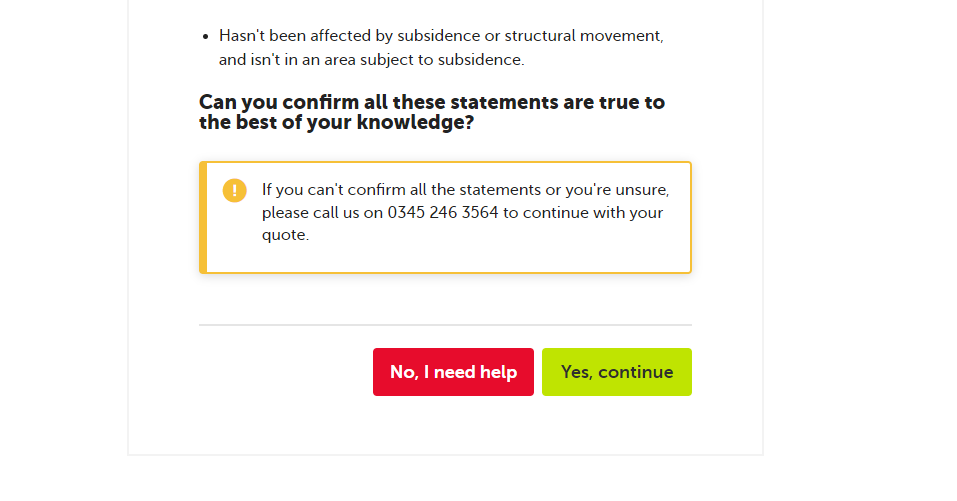Welcome to faster smarter quote & buy
Published on: November 2, 2023
Updated on: September 3, 2024
Reduced question sets and data enriched assumptions is speeding up online quotation times. This is broadly good news for consumers. But well considered UX is key.
Recent consumer research data we’ve had access to suggests customers are comfortable with the use of data enrichment, if used responsibly and in their interests.

Vigilance required
The downside of data enrichment and increased use of assumptions is that consumers need to be more vigilant. Increasingly, the onus is on them to ensure the data presented by the Insurer is correct and related assumptions are correct. A cursory review of pre-selected answers and an over-hasty clicking of ‘I agree’ is likely to have bigger implications than clicking ‘Accept’ on a phone software update.
Considered UX can help protect the consumer.
Conversational forms
In our latest Q4 2023 UX review of UK Insurers, assumptions and data playback come in varying forms, from the simple list to pre-selected fields and conversational forms with edit options.
LV= has employed conversational forms to good effect on both their car and home quote journeys.
The mechanism can work well. The natural language convention is approachable, gives context and and encourages consumers to comprehend and check the pre-selected details, unlike a catch-all opt-in agreement at the end of a bulleted list.
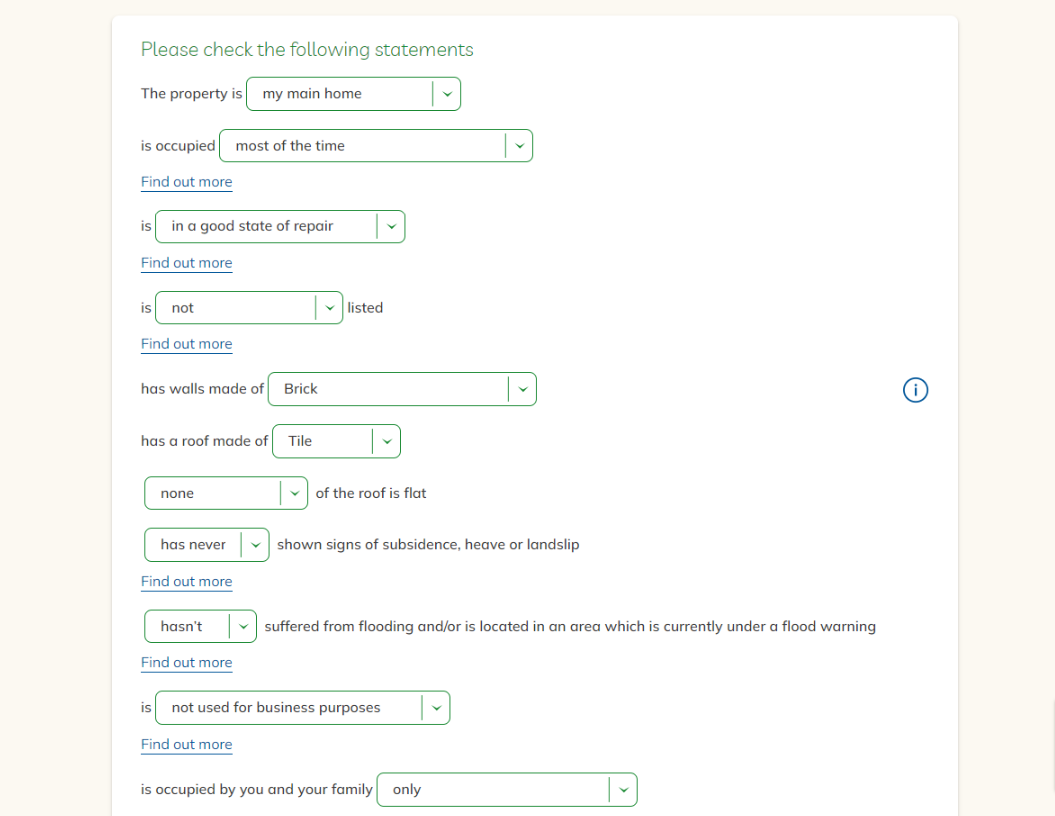
Direct Line utilises a different User Interface and interactivity but the end result is equally effective.
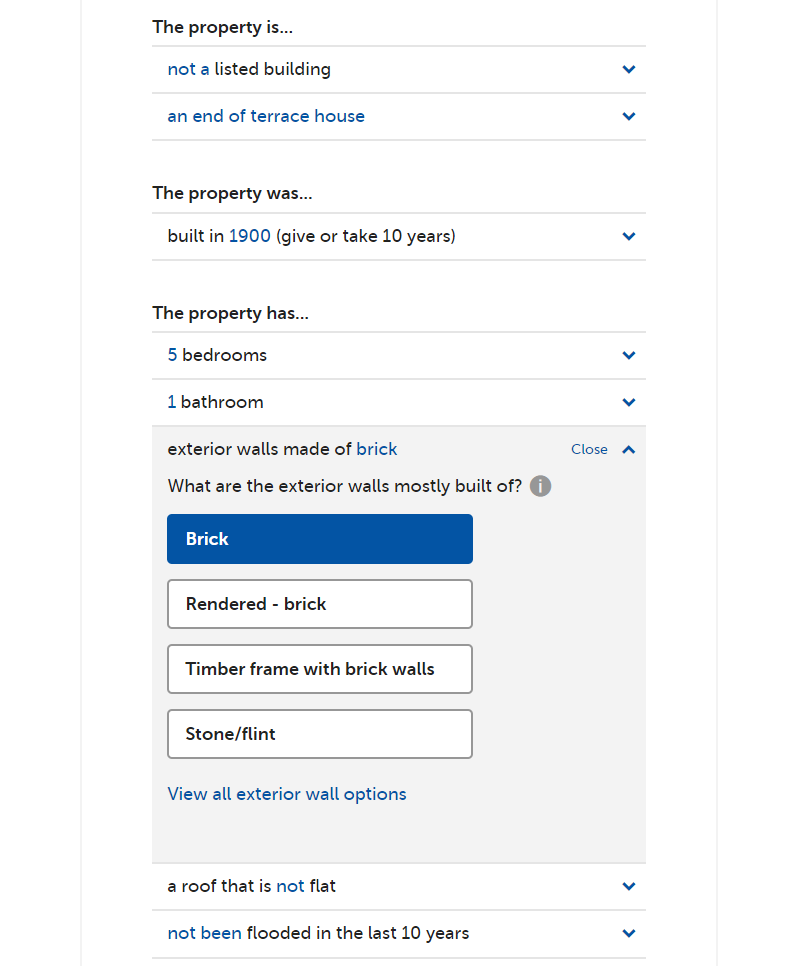
Pre-selected fields
The Post Office executes the pre-selected field convention well.
Good space management of the statements and a gently assumptive '...is that correct?' at the end of each is engaging.
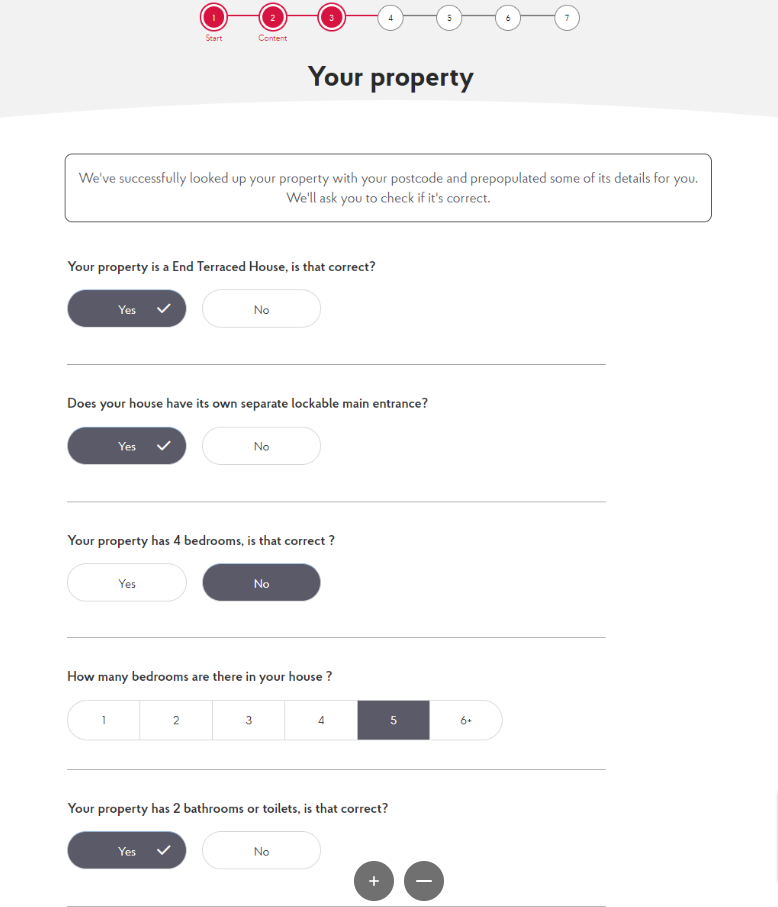
Traditional opt-ins
Very popular still across the majority of Insurers is the traditional bulleted assumptions list and catch-all agreement.
Classic example here from MoreThan;
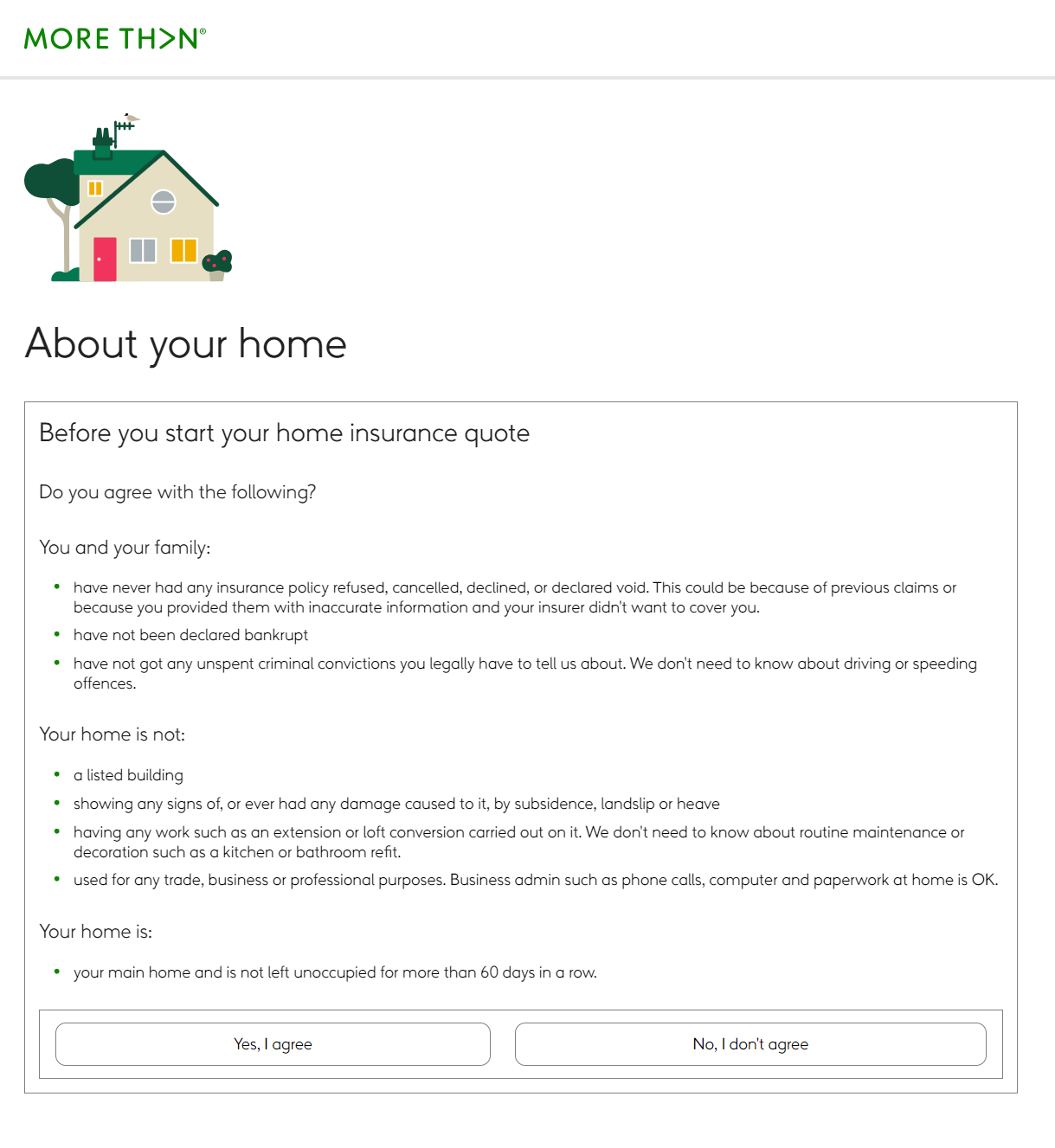
Direct Line has an alternative to the binary 'Yes/No agree' buttons with a 'No, I need help' option.
Hover state is red and when clicked the user is presented with a call centre number.
